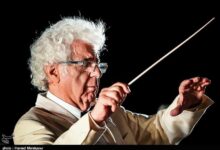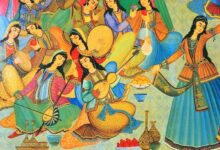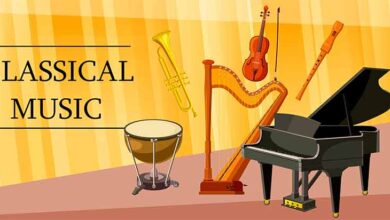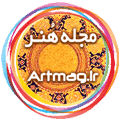Review description of music and music therapy on humans

Where speech remains open, music begins. (Heinrich Heine). There are countless races. But language and soul are one: the language of love.
Music is a kind of language of love. The use of music to understand the beauty and health of life is inevitable.
From the beginning of human creation, various needs (both physical and mental) have been associated with him, and to meet these needs, adaptation to his environment has required tools.
Art, as one of the primary means of human adaptation, has served the needs of perfectionism and aesthetics, and on the other hand, has calmed the sorrows and hardships of his life. Music is a form of art that conveys human feeling, emotion, perception and cognition without the need for speech and language.
Human use of music has been easy and accessible, because rhythm and melody, as the two basic elements of music, have existed in human nature, and phonemes and rhythmic movements have not required speech. Therefore, in most of the primitive tribes, various ceremonies and rituals, music that was a means to express solidarity and eliminate fears and sorrows and create peace and happiness and will among the members of the tribe.
Music is the language of human desires, expectations and emotions. And each nation has its own music according to its emotional and cultural characteristics. By understanding music, beautiful emotions, empathy and understanding will be possible from the heart.
Depending on the combination of intervals and rhythms, music tunes have special vibrations that strengthen, weaken or transmit a feeling and motivation by stimulating the vibrations of nerve cells. Although the benefits of music therapy have been discussed since time immemorial, it has not been well established until it was recognized as a specialty in the last century.
Music is healing and each of us can use it to strengthen body, soul and spirit. The effect of music and sound on each of us is different. But it does affect us anyway. To heal with music, we must participate in it. That requires more than just listening to music by filling in extra time in life.
Music must be able to strengthen the national language and spirit. Music in a person’s life starts from the beginning of childhood and the life of infancy and cradle with the lullaby of the mother and continues its course in different stages of time. Iranian music has a very long history. In the time of Hazrat Zarathustra, music was accompanied by hymns and songs, the purpose of which was to convey good speech, good thoughts and good deeds.
In general, ancient Iranian music has very deep roots in Iranian test culture.
History of Music
The first definite signs of music development and prosperity were found in Mesopotamia and among the Sumerian, Assyrian and Babylonian tribes. And it dates back to more than three thousand years BC. Then came China and Egypt, which had music around a thousand years BC. Unlike Japan, one of the oldest centers of music and the first ethnic emperor, Korea composed Chinese music around 5,000 BC. And in the west of the country, Greece was more than a people and music was popular there from about 800 BC. Music in Italy dates back to 300 BC. And the white tribes in West Asia, North Africa, Eastern Europe created the ancient civilization, and in hunting and farming societies, there is no show without music.
In these societies, unlike our music, rhythm is given the most importance, and this rhythm or weight is noticeably more complex and meaningful than the great symphonies. In societies with non-productive economics, music is based on melody and rhythm. The Greek scientist Democritus’ idea that man wanted to imitate the song of birds and therefore made music is only partially true. Human hair is the oldest musical instrument. In primitive societies, songs are always monotonous. The oldest type is opera, sung by the group leader, and repeated by others after a while.
History of Music Therapy
The history of using music as a method of healing dates back to the time of Aristotle and Plato. Since then, traces of the use of sounds and songs have been used to treat various diseases. But in the twentieth century, the formal idea of using music to treat the wounded of World War I began. And although the use of this treatment was associated with problems. With the steps taken, this branch of therapy gradually evolved and several associations were formed. In 1944, the world’s first music therapy program began at the University of Michigan.
In 1950, the Music Therapy Association began. In 1971, the American Music Therapy Association, or AAMT, was formed. In 1985, the World Federation of Music Therapy was registered internationally. The Iranian Music Therapy Association has also started its activities with the aim of raising the level of people’s awareness of the music therapy process and its benefits and raising the specialized facilities for using this treatment method.
Music and Therapy
From the beginning of history, mankind has used music to heal the sick. For example, the rhythm of drums has played an important role in the healing ceremonies of witches and healers.
Aristotle says: “Music can be used in many ways of life, education, entertainment, healing, leisure time and adjusting feelings and emotions.” Farabi introduced music with three qualities:
Emotional, uplifting, imaginative, or under conditions that have all three characteristics.
Today, we talk about the effect and benefits of music on different stages of human development and life (from embryonic to old age) of plants and animals. And its changes on sensory, motor, emotional-emotional systems, glandular secretion, consciousness and awareness and cognition are discussed.
Introduction to Music Therapy
Music therapy is a new discipline. And it has only developed as a classic and professional specialty for fifty years. In short, music therapy uses music, which is a creative art medium, to help people with a variety of problems achieve their mental and physical health.
Music therapy has been successful in treating people with a variety of disabilities, including mental retardation, developmental delays, physical disabilities, mental illness, and more.
The music therapist pursues goals and objectives based on the client’s specific needs. Various techniques are used to advance the goals. For example, singing can help people with Alzheimer’s disease. To activate their long-term memory. Playing musical instruments with a peer or therapist can enhance interpersonal skills and improve social functioning. Most importantly, people express their feelings in a safe and enjoyable way by playing music, listening to music, and dancing to music.
Of course, music therapy is not only used to serve people with different types of disabilities. It is also useful in various medical conditions. Including reducing stress or labor pain and rehabilitating stroke patients. The main issue for the therapist here is to reduce the pain and its tolerance in the treatment method or to help the patient to achieve optimal physical and mental functions. Music therapy has grown exponentially in different countries of the world in recent years. And many therapeutic works have been done by music therapists. And it has been emphasized that music is basically very effective in treating people with various medical conditions.
The Four Pillars of Music
Music Has Four Pillars:
Rhythm or beat or melody or harmony and tone, shot or coloring. These are the tools or materials of any construction. Most historians agree that wherever the art of music originated, it began with rhythm or multiplication. The impact of an exciting and lustful beat is so fast and instantaneous that it is proven to us by instinct. Multiplication has been the first thing that human beings have initiated in music, and if we are aware of our instinctual powers, we can consider the music of savage tribes to prove this point. The music of the savage tribes to this day is nothing but a beat. The great connection between news works and body movements is itself a compelling reason why rhythm and multiplication were the first human initiative in music.
Definition of Music
Music is the sounds and melodies that create a movement in the human psyche that makes one feel happy or sad. In other words, music is the art of creating songs that can temporarily and artificially produce joy and sorrow. These songs are divided into two parts:
Natural songs: like melodies and streams and waterfalls, the sound of gentle breezes among the foliage of trees, the sound of birds.
Unnatural songs: Like what is made by humans and has different modes and vibrations.
* Sources and references are available in the editorial office of Artmag.








